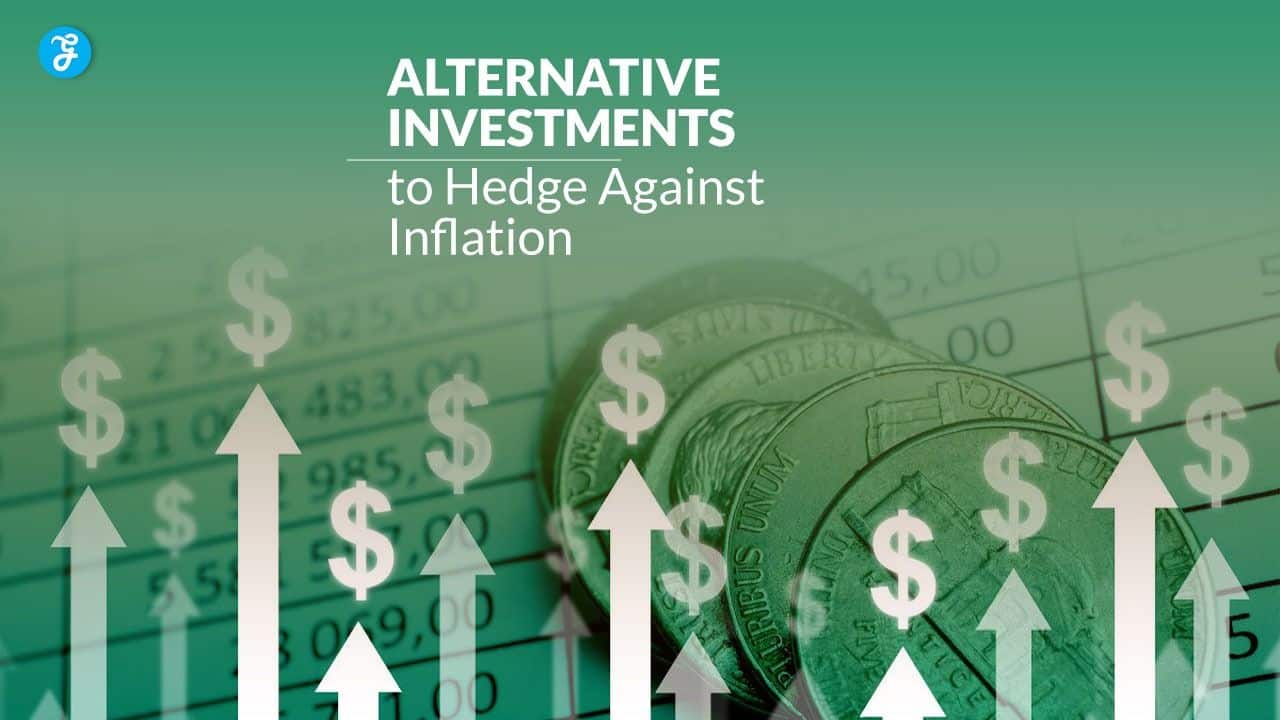Inflation poses a serious challenge to wealth preservation, diminishing the purchasing power of money and making it harder for individuals to maintain their standard of living. While traditional investments like stocks and bonds often falter in high inflation periods, alternative investments can act as a shield, protecting your assets from eroding value. These investments often provide higher returns or retain intrinsic value, even during turbulent economic times.
In this comprehensive guide, we’ll explore five alternative investments that are not only effective inflation hedges but also provide diversification and potential for long-term growth.
Understanding Inflation and the Need to Hedge
What is Inflation?
Inflation is the rate at which the general level of prices for goods and services rises over time, reducing the purchasing power of money. For example, if inflation is at 5%, an item costing $100 today will cost $105 next year. While moderate inflation is a sign of a growing economy, high inflation can disrupt financial stability.
Why Hedge Against Inflation?
Hedging against inflation means investing in assets that can either outpace inflation or maintain their value despite rising prices. Here’s why it’s essential:
- Preserving Wealth: Cash loses value during inflation, but strategic investments retain or grow their worth.
- Enhancing Returns: Inflation-friendly assets can yield better returns during economic uncertainty.
- Diversification: Adding alternative investments reduces dependence on traditional assets like stocks or bonds.
5 Alternative Investments to Hedge Against Inflation
1. Real Estate: Tangible Wealth with Growing Demand
Real estate has consistently proven to be a powerful hedge against inflation. Property values and rental income often rise alongside inflation, making real estate a dual-benefit investment.
Key Advantages
- Appreciating Asset: Real estate typically gains value over time, outpacing inflation.
- Passive Income: Rental properties generate income that can adjust to match inflation rates.
- Tangible Security: Unlike paper assets, real estate is a physical asset with intrinsic value.
Types of Real Estate Investments
- Residential Properties: Homes, apartments, and vacation rentals.
- Commercial Properties: Offices, retail spaces, and warehouses.
- Real Estate Investment Trusts (REITs): Publicly traded companies that invest in real estate, allowing individuals to benefit from property ownership without managing physical assets.
Pro Tip: Look for properties in growing markets with increasing population and economic activity to maximize returns.
2. Precious Metals: Timeless Stores of Value
Precious metals like gold and silver have long been regarded as safe-haven assets during inflation. They retain their value due to their scarcity and universal demand.
Why They Work
- Intrinsic Value: Precious metals are finite resources, immune to devaluation caused by overproduction.
- Global Acceptance: Gold and silver are recognized worldwide as reliable stores of value.
- Inflation Protection: Historically, their prices rise during periods of high inflation.
How to Invest
- Physical Assets: Buy gold bars, coins, or silver bullion.
- ETFs: Exchange-Traded Funds that track the price of gold, silver, or platinum.
- Mining Stocks: Shares in companies that mine precious metals offer indirect exposure.
Example: During the 1970s inflation crisis, gold prices surged from $35 per ounce to over $800 by 1980, proving its value as an inflation hedge.
3. Commodities: Essential Goods with Rising Prices
Commodities include raw materials such as oil, natural gas, agricultural products, and industrial metals. Their prices often rise with inflation because higher production costs are passed on to consumers.
Why Commodities Shine
- Direct Correlation: Commodities are directly tied to the cost of production, which inflates with rising prices.
- Global Demand: Commodities like oil and grains are always in demand, providing stability.
- Portfolio Diversification: Commodities typically move independently of stock and bond markets.
How to Invest
- Direct Purchases: Physical commodities like gold, silver, or crude oil.
- Futures Contracts: Agreements to buy or sell a commodity at a specific price in the future.
- Commodity ETFs: Funds that invest in commodity markets without requiring physical ownership.
Notable Insight: During the 2008 financial crisis, oil prices spiked, demonstrating how commodities can serve as an inflation hedge even in volatile markets.
4. Cryptocurrencies: The Digital Hedge
Cryptocurrencies like Bitcoin have emerged as a modern inflation hedge due to their decentralized nature and limited supply. Bitcoin, in particular, has been labeled “digital gold” for its potential to store value.
Why Cryptocurrencies are Promising
- Decentralized Control: Cryptocurrencies are not influenced by central banks or government policies.
- Limited Supply: Many cryptocurrencies, like Bitcoin, have a cap on the number of coins that can be mined, preventing inflation.
- Global Accessibility: Cryptocurrencies can be traded or held worldwide without restrictions.
Risks to Consider
- Volatility: Cryptocurrency prices are highly volatile and can experience sharp fluctuations.
- Regulatory Concerns: Governments may impose restrictions or bans.
- Security: Digital wallets can be vulnerable to hacking if not adequately protected.
How to Start
- Buy and Hold: Platforms like Coinbase or Binance allow direct cryptocurrency purchases.
- Stablecoins: Cryptocurrencies pegged to fiat currencies (e.g., USDT) offer less volatility.
Case Study: Bitcoin surged from $5,000 in March 2020 to over $60,000 in 2021, partially fueled by inflation fears and growing adoption.
5. Collectibles and Art: Unique and Rare Investments
Collectibles like fine art, antiques, wine, and vintage cars can act as effective inflation hedges due to their rarity and demand among wealthy buyers.
Why Collectibles Work
- Scarcity Drives Value: Limited supply items, such as rare paintings or coins, increase in value over time.
- Cultural Appeal: Art and collectibles hold intrinsic and historical significance.
- Independent Market: Their value isn’t tied to the stock market or economic cycles.
How to Invest
- Auction Houses: Platforms like Sotheby’s and Christie’s allow individuals to bid on high-value items.
- Online Marketplaces: Websites like eBay and artsy.net connect buyers and sellers globally.
- Art Funds: Investment funds that pool resources to purchase and hold valuable art.
Challenges
- Illiquidity: Selling collectibles can take time.
- Storage Costs: Items often require specialized storage and insurance.
- Valuation Complexity: Determining true value can be subjective and vary by market.
Example: In 2021, a digital artwork by Beeple sold for $69 million at Christie’s, highlighting the growing demand for rare assets.
Comparison Table of Alternative Investments
| Investment Type | Inflation Hedge | Liquidity | Risk Level | Historical Performance |
|---|---|---|---|---|
| Real Estate | High | Moderate | Market Fluctuations | Consistent, long-term growth |
| Precious Metals | High | High | Price Volatility | Stable during inflation peaks |
| Commodities | High | High | Market Dynamics | Positive correlation with CPI |
| Cryptocurrencies | Moderate | High | Regulatory Risks | Rapid growth, but volatile |
| Collectibles & Art | Moderate | Low | Illiquidity | Rare items show steady growth |
Takeaway
Inflation poses a serious threat to financial stability, but alternative investments offer a robust solution. Whether it’s the tangible security of real estate, the timeless value of precious metals, the global demand for commodities, the innovation of cryptocurrencies, or the rarity of collectibles, these investments help preserve and grow wealth even in challenging economic conditions.
Before diving into any of these options, evaluate your financial goals, risk tolerance, and investment timeline. Diversification across multiple alternative investments can further mitigate risk and enhance your portfolio’s resilience against inflation.







































